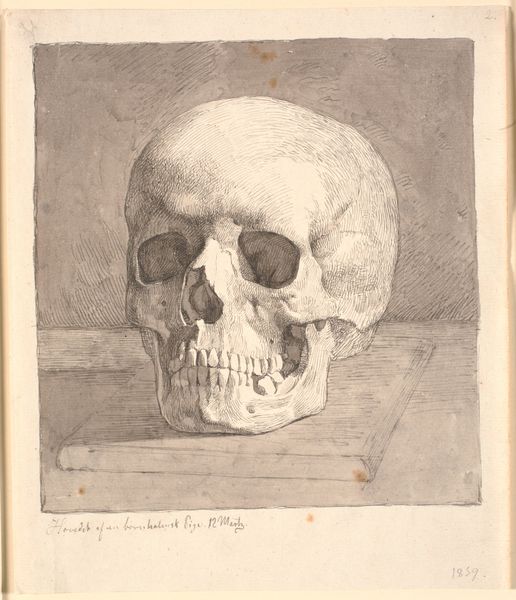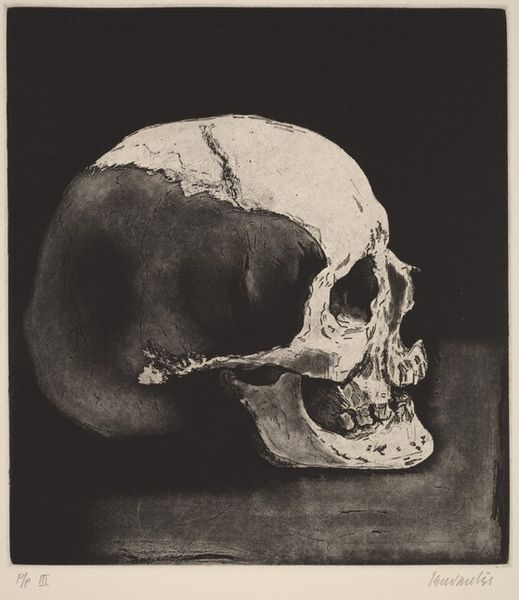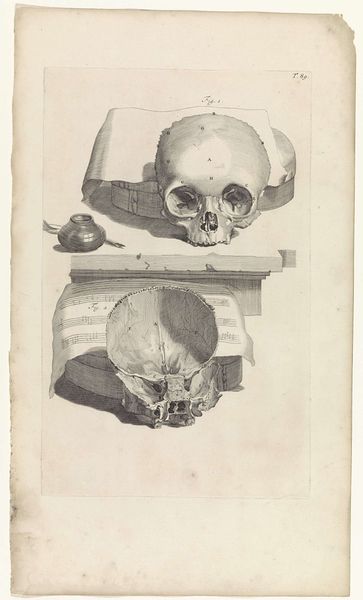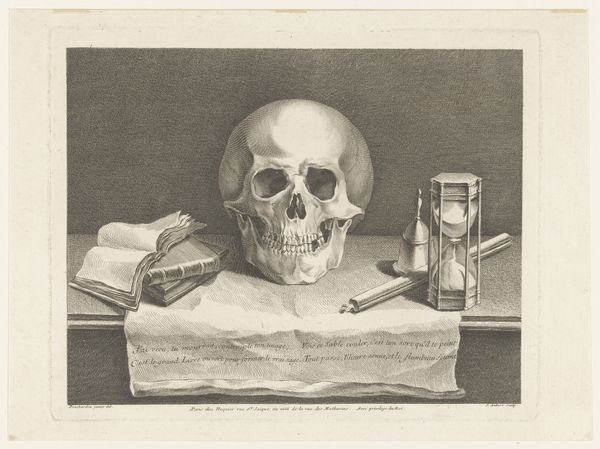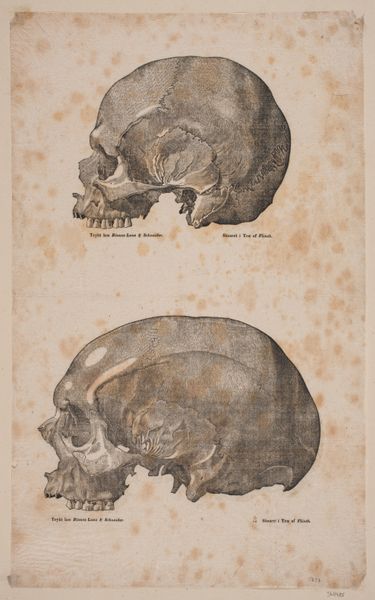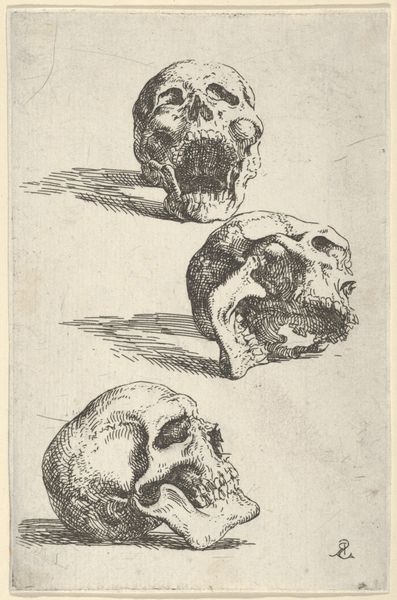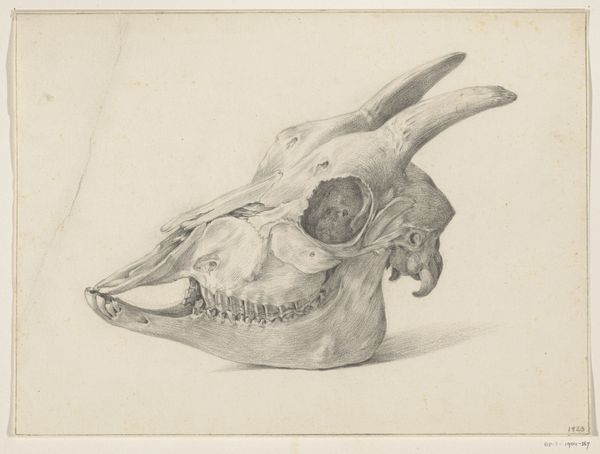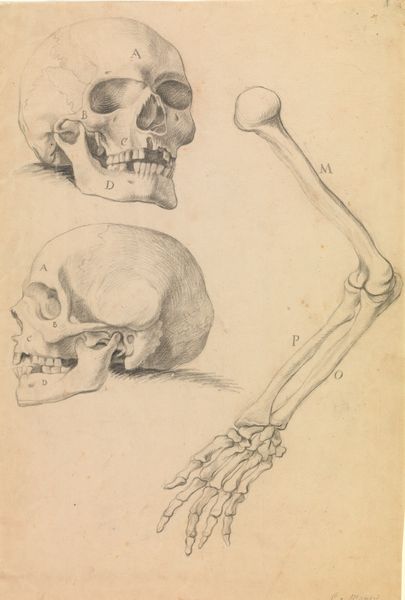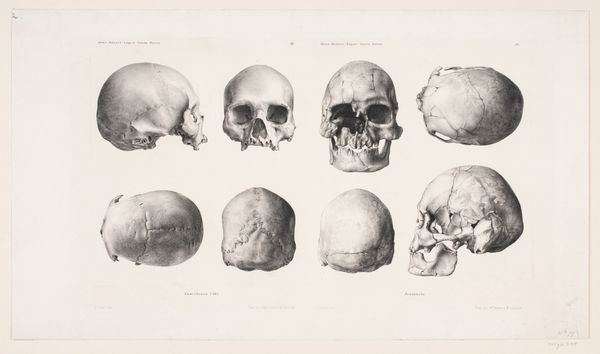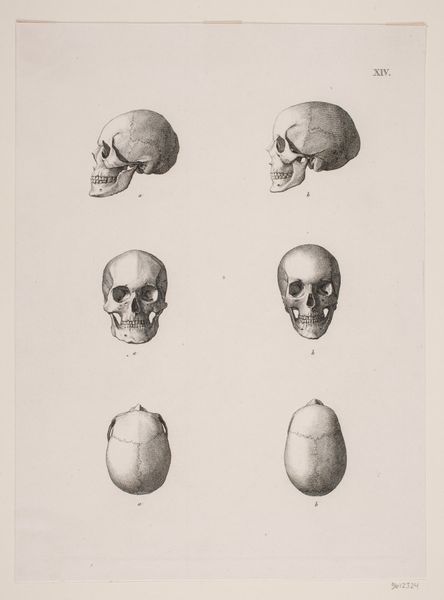
drawing, print, etching, intaglio, engraving
#
drawing
# print
#
etching
#
intaglio
#
figuration
#
11_renaissance
#
history-painting
#
engraving
#
realism
Dimensions: Plate: 3 1/16 × 3 5/8 in. (7.8 × 9.2 cm) with narrow margins all around
Copyright: Public Domain
Editor: We're looking at Wenceslaus Hollar's etching, "Skull in profile to right," from 1645. The detail is striking, and it's hard to ignore the almost clinical detachment of the presentation, the skull sitting on a block... How do you interpret this work in its historical context? Curator: Hollar’s "Skull in Profile" compels us to consider the social and philosophical anxieties of 17th century Europe. This wasn't merely an anatomical study; the skull emerged as a potent symbol within the vanitas tradition during this time. Editor: Vanitas? Curator: Yes, a genre reminding viewers of the ephemerality of life, the futility of earthly pleasures, and the certainty of death. Considering the historical context - constant war, famine, and plague - Hollar's etching transcends mere artistic exercise. Don't you find it underscores the pervasive awareness of mortality in everyday life? Editor: I suppose so. The 'memento mori' feeling is definitely there. It does seem to reflect societal fears about death. The skull appears like a found object, clinically rendered… Does that speak to a specific perspective on mortality? Curator: Precisely. The stark realism challenges any romanticized view of death, instead prompting introspection and perhaps even inciting social critique regarding inequalities in life and death. Could this 'clinical' depiction also critique power structures and access to well-being of the time? Editor: I hadn’t considered that aspect, but you're right. Focusing on the physical reality of death certainly seems like a levelling act. Thank you, that gives me a lot to think about. Curator: And it pushes us to remember art’s persistent function, not just as representation, but as a historical reflection, and potentially, an instrument of social commentary.
Comments
No comments
Be the first to comment and join the conversation on the ultimate creative platform.

